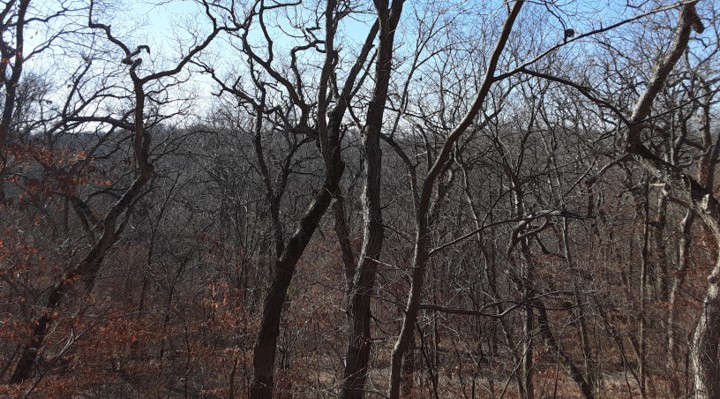Happy new year! 2021 is here at last, and like many of you, I’m full of plans and resolutions—or rather, full of dreams and desires I hope to transform into plans and resolutions. One day soon they’ll emerge like the ground from beneath the melting snow.
Planning the Wild Garden…
I started out years ago wanting to recreate The High Line in our backyard. Of course this is impossible, but after looking at millions of pictures and reading many books, I’ve come to understand some basic principles I want to apply. I just don’t know how to put them into action in a pleasing way—and I don’t know much about plants. Sometimes I feel like if I could just get a plan, I’d follow it.

I picked up this pamphlet, Native Plants for Your Landscape, at a presentation at the Anita B. Gorman Nature Center. It contains four design ideas. I had my eye on the Hummingbird haven. I don’t know what happened to that idea. I may have substituted milkweed for all the suggested plants. This is what made the garden wild.
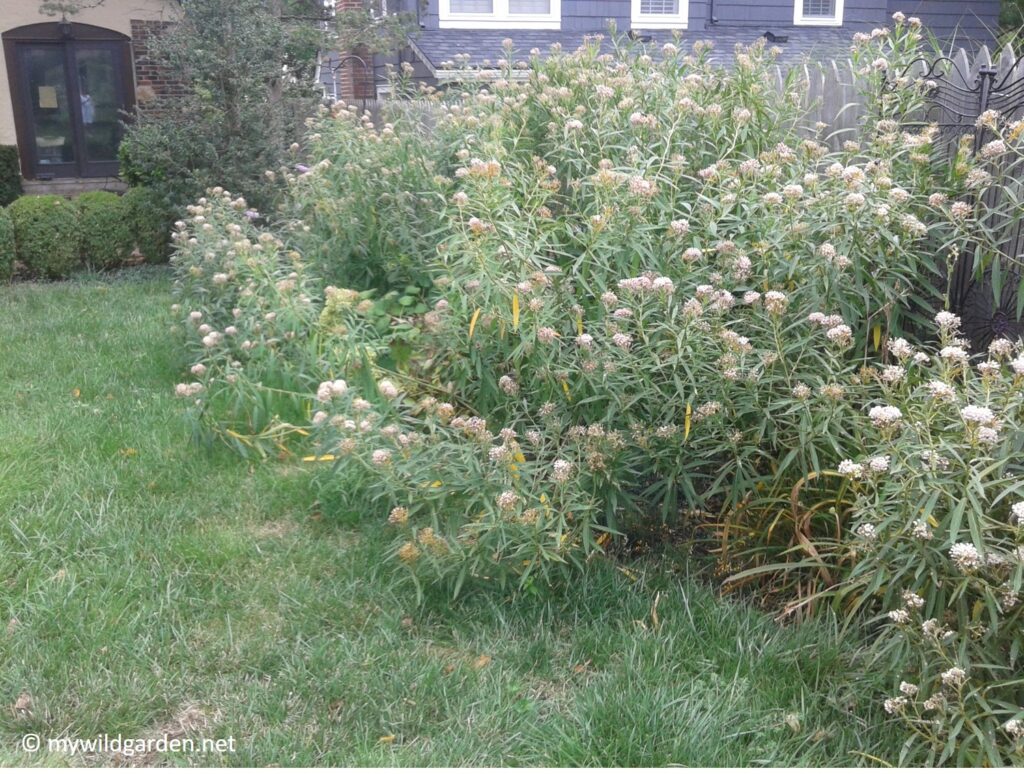
This stuff (Asclepias incarnata, I think) is aggressive. The Missouri Botanical Garden calls it rough and weedy, and they are right. It grew into a thicket six feet high. The second year it sprouted all over the yard.
Monarch Watch says: “Fun Fact: In the past, the roots of swamp milkweed were simmered to make a tea taken in small quantities both as a general purge and to destroy and expel parasitic worms.” We haven’t tried that, but we love watching the butterflies.
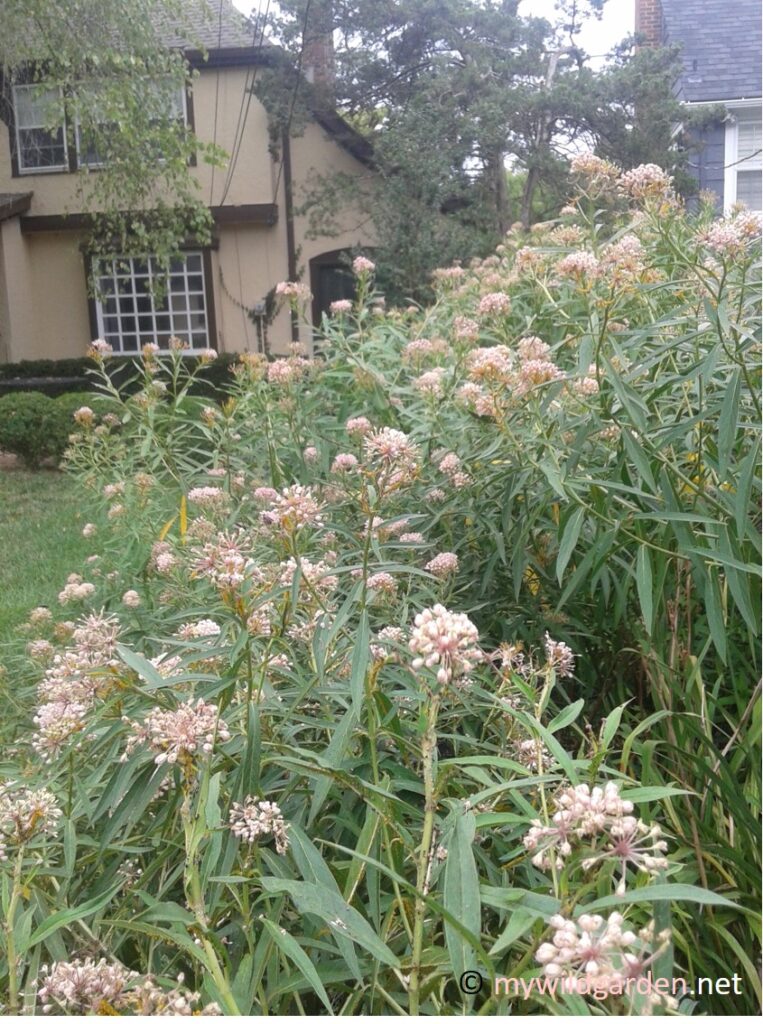
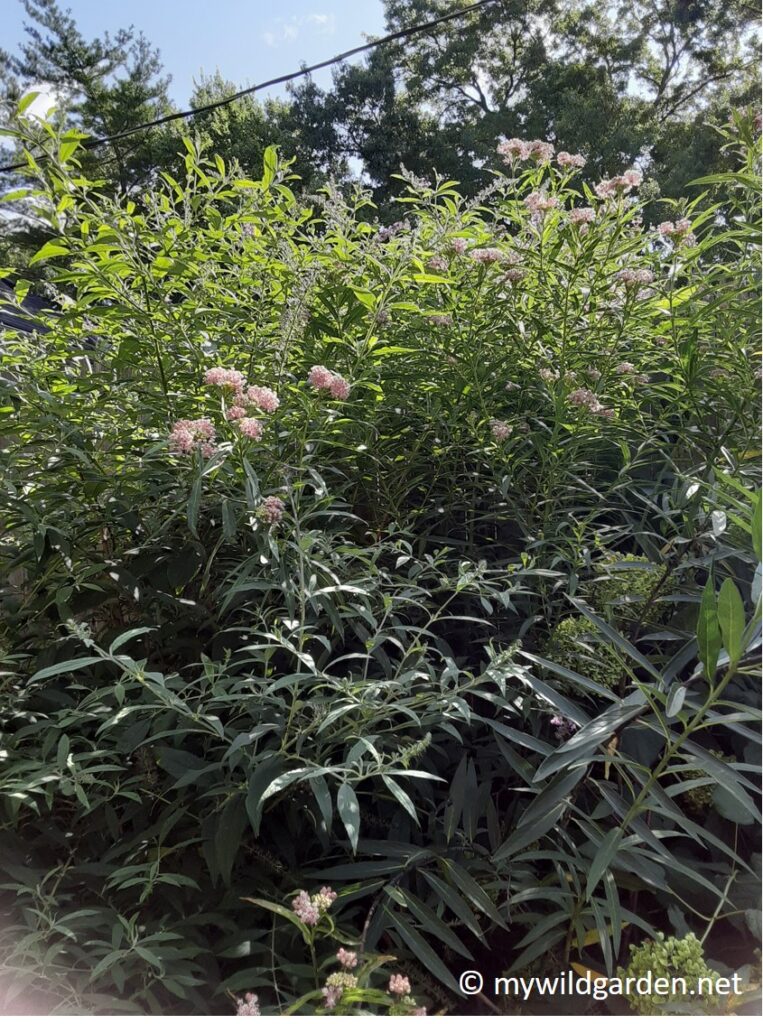
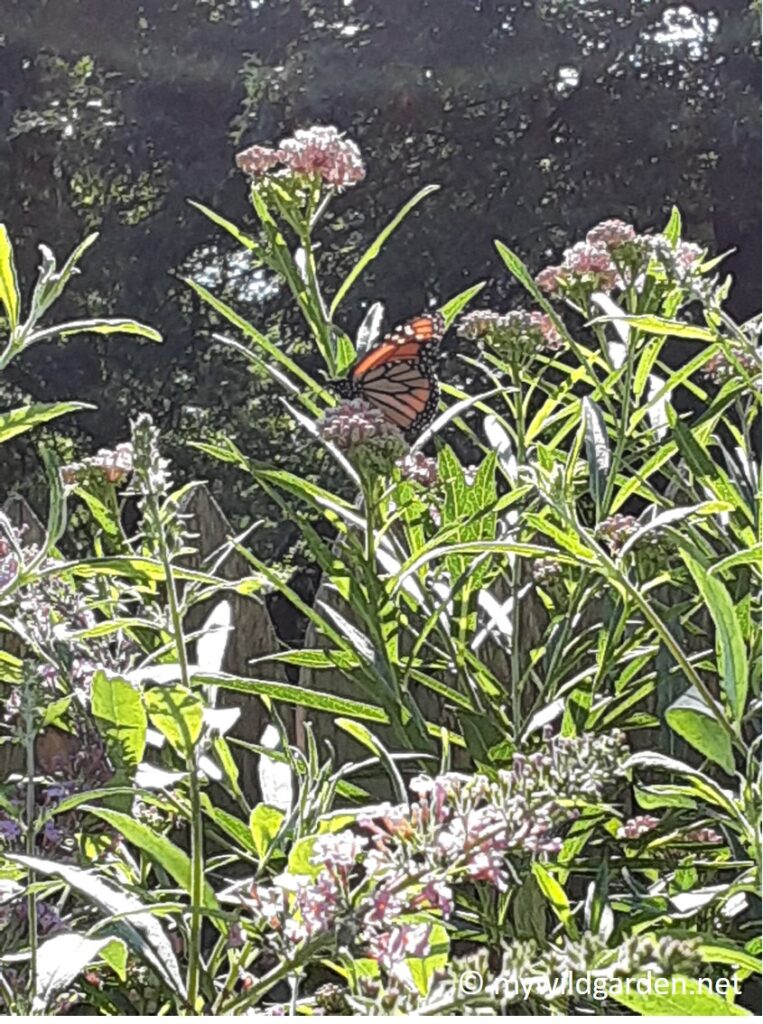
Eventually my research led me to Roy Diblik’s The Know Maintenance Perennial Garden: “a simplified approach to making a design magazine-worthy garden achievable at home.”

Diblik worked with Piet Oudolf on the Lurie Garden in Chicago, and some of his work at the Art Institute can be seen by the public. I adapted two of the book’s plans for areas in my yard. One is a plan for shade, “Moments of Color,” and the other, for sun, is inspired by Pierre Bonnard’s painting Earthly Paradise.
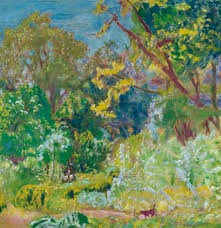
Diblik says, “I designed this garden for the Art institute of the Chicago,” but I could not find images of gardens that follow either of these plans. I planted anyway.
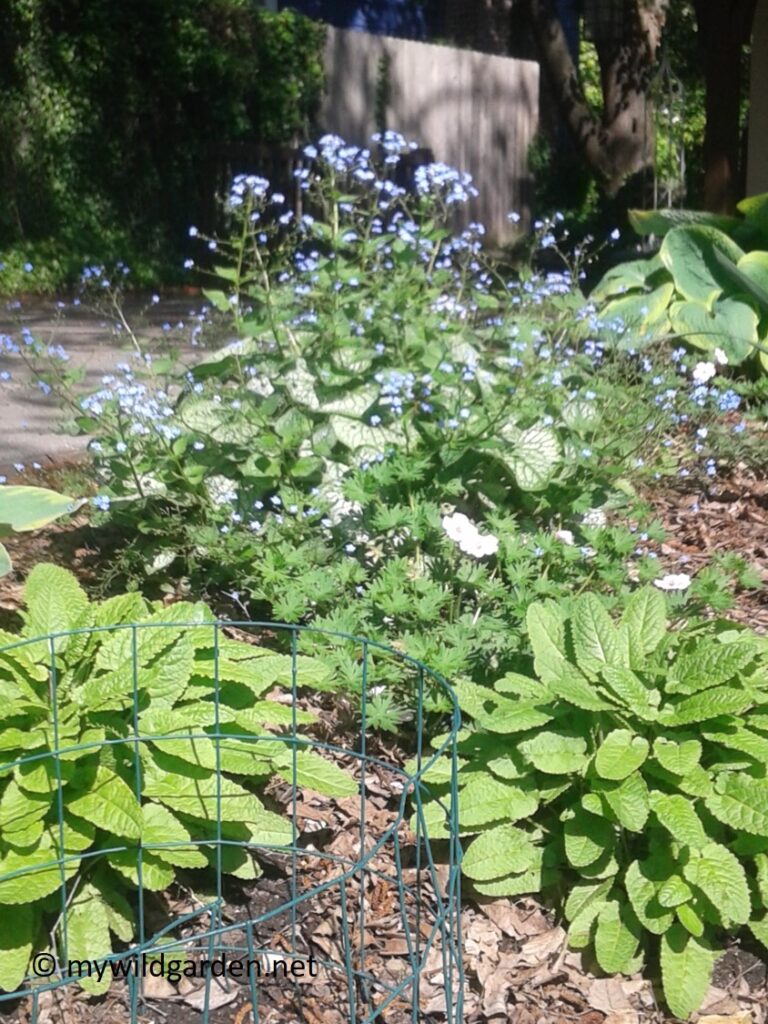
The first thing that grabbed me about the Know Maintenance book is that Diblik despises wood-chip mulch. He describes surrounding plants with wood-chip mulch as wistful, sad, a wasteland. I always kind of liked seeing neat, brown beds dressed with dark brown mulch, so that was new and surprising. Now the sight of crews out spreading this stuff in the fall makes Diblik’s line chime in my head: “American the beautiful is now just the land of neat and tidy.”
He recommends mulching with ground-up leaves instead. “Your goal, remember, is to let the plants live in and with their own decaying leaves and stems, never again removing them from the garden.” Yes! The arrival of the leaf-sucking truck in our neighborhood has always been exciting for us, but not anymore. In fact, I wanted more leaves than I had, so I brought home some of my neighbors’ and mulched them up.
I love Diblik’s ideas, but must admit, my own results with these plans have been mixed. Some plants are doing great, but others aren’t. I misjudged how shady the strip along the south side of our yard is, and I substituted natives for some of the plants so I could buy them from Prairie Nursery in Wisconsin. I also only planted small portions of each plan.
You have to know the plant! Without plant knowledge, nothing can happen.
You have to know your site conditions.
You have to own your commitment to care and maintenance.
You have to be sure you’re telling yourself the truth.
Roy Diblik, The Know Maintenance Perennial Garden
I disregarded all his advice, in other words. Also, my taste is evolving. Lately what I desire is a herbaceous border like the one at Arley Hall.

Layering…
All the garden blogs, books, TV shows, podcasts, and experts give the same advice. Begin with structural layer, then add seasonal layers, and fill in with a ground layer of ephemerals, or bulbs.
I’m missing the structural layer.
Last week we got rid of some trees, a Japanese maple by our front door and two eastern red cedars in back yard. The maple had died. We don’t know why. The cedars were bent, twisted, and unattractive. When we moved in ten years ago, ivy covered two-thirds of the then-shady backyard, and although I dug it up and pulled it off the cedars, they never thrived. House-eating squirrels used them as an onramp to the roof. The constant thump of their galloping overhead finally convinced us to cut down the trees. Now this expanse of our rectangle of a yard is empty, leaving the entire east side completely without a structural layer.
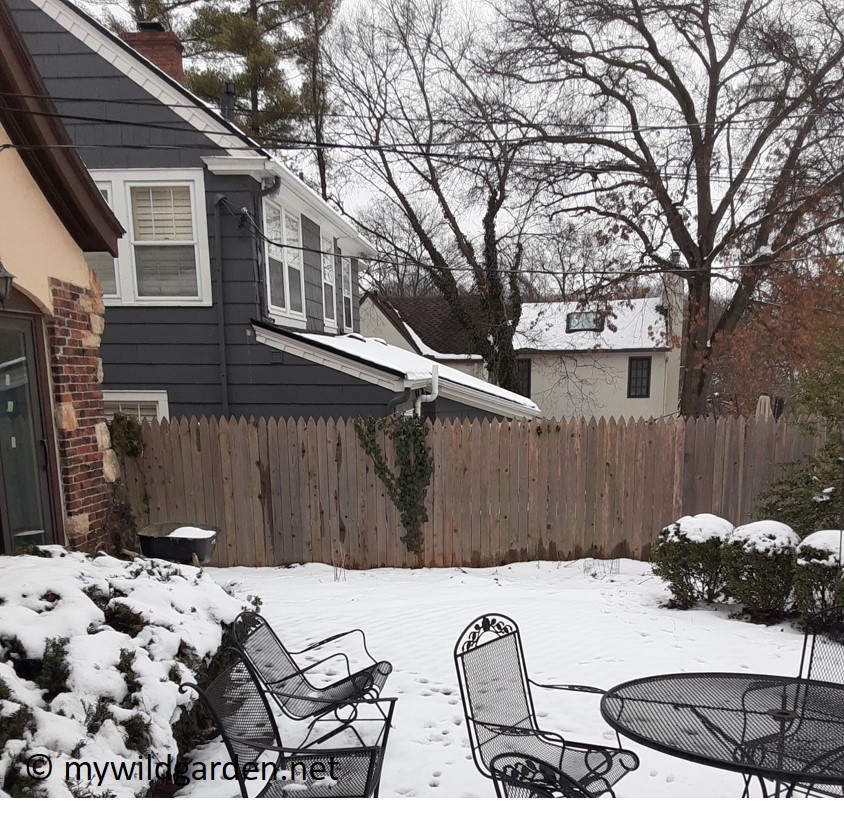
Potential! We will replace the trees in the spring, but with what? We are considering hornbeams.
Hornbeams not native, although that doesn’t necessarily disqualify them. In much of my reading the authors recommend creating plant communities: groups of plants that thrive under the same conditions. These may be natives, but they don’t necessarily have to be. The Missouri Botanical garden lists the European hornbeam as a Plant of Merit. And while there is an American hornbeam, I’m not sure it has the distinctive almond shape we admire.
What should we do? I’m open to suggestions. (But no snarky ones, you Moldovans.) I’ll be making plans over the next few months.
Thank you!
I’d like to close by thanking the gardeners who visited with me in 2020: Jacques Bredius, Dana Posten, Marissa Adams, Deb Guardia, and Brent Tucker. Thank you for sharing your wonderful gardens and deep knowledge of plants. I’m also grateful for the help and encouragement I received from my friends Susi Cohen and Grace Suh.
I already have some garden visits lined up for spring and can’t wait to write about them. If you have a garden you’d like me to visit and write about, please let me know how to get in touch with you. I’d love to see it.
Most of all, thanks to all of you for reading. Happy gardening and dreams of summer!
